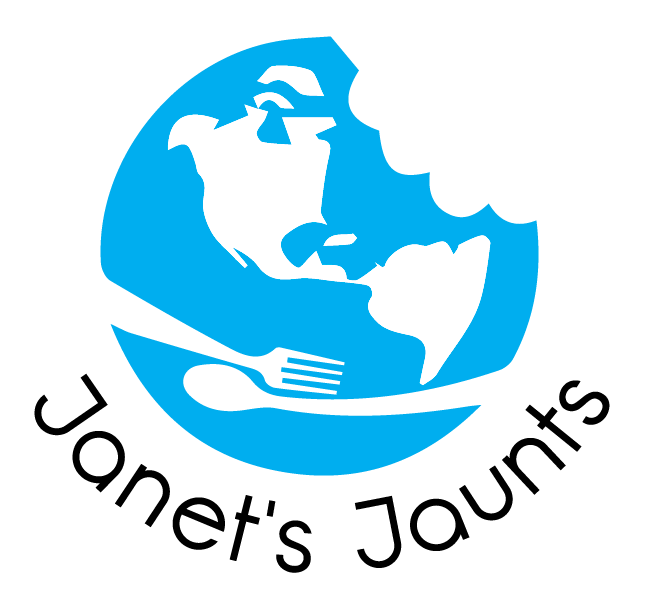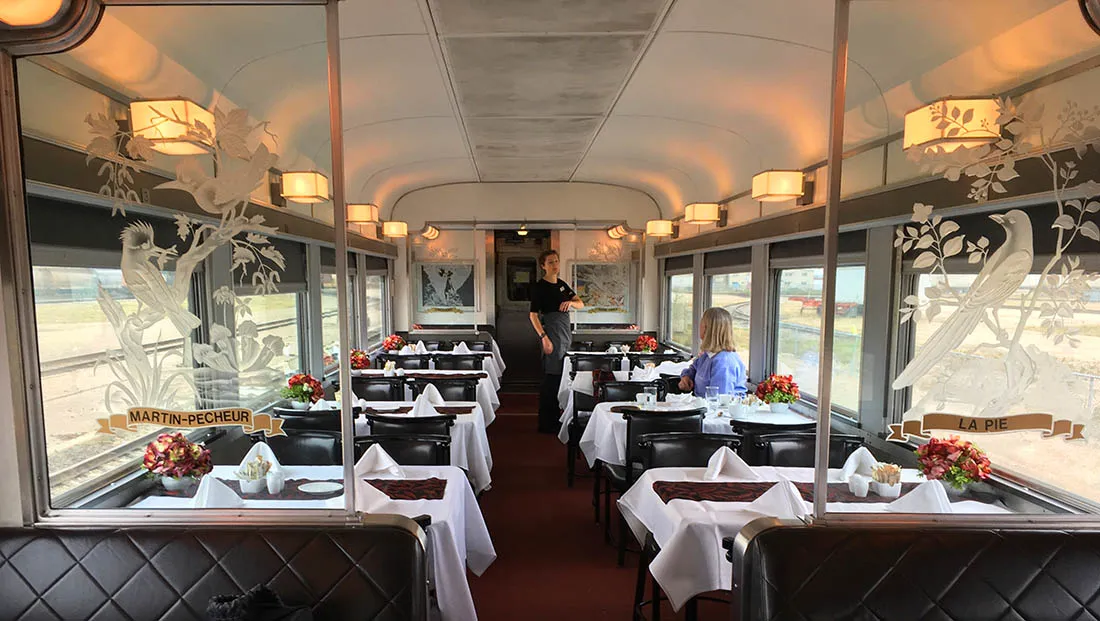Canada by Rail
The distant call of train whistles has been an almost unconscious part of my life for decades, informing my dreams of distant places and thoughts of travel as I nod off each night when I’m at home.
So when the opportunity to cross Canada by train on VIA Rail’s legendary “Canadian” presented itself, I jumped at the chance. The 2,775-mile journey began for me in Vancouver and ended in Toronto, passing through some of the most breathtaking scenery on earth at a time of year when the leaves were changing color.
I left the train for a few days in Jasper so I could get a good fix of Rocky Mountain majesty before the train route took me into the plains regions of Alberta, Saskatchewan and Manitoba.
My traveling class was Sleeper Plus, which afforded me a small stateroom with a sink, my own lavatory and two large arm chairs that converted into a cozy bed at night. I slept at a 45-degree angle to the train, allowing me to leave the shade open and watch the passing scenery beyond my feet. Other classes aboard this train were Economy and Prestige.

Those bringing their own wines aboard must keep them in their staterooms. I kept my French rosé chilled with ice in my stateroom’s sink until my cabin attendant brought me an ice bucket.
Because I was traveling alone I had lots of room in the space built for two travelers. The transformation by my sleeping car attendant took place at day’s end while I was at dinner and again the next morning while I had breakfast. My knee had been injured before I left home, and my sleeping car attendant refroze my reusable ice pack for the icing I needed to do and offered to bring my meals to my stateroom. But I declined, taking my time and using my cane to walk along the train to dine.
Meals were one of the things that defined the days, along with special events such as wine and beer tastings, live music, movies, and the opportunity to play board games with other passengers. Meals are included for those traveling in Sleeper Plus class.

The bar in the Prestige car at the rear of the Canadian has premium liquors and a variety of wines. The lounge and other Prestige cars are open to other passengers in late afternoon.
Each day passengers were given choices about the times they wished to dine. Breakfast was sometimes open-seating with two seatings for breakfast and dinner, announced by a dining car attendant walking through the sleeping cars. Seating time choices were recorded for breakfast and lunch the night before and for dinner during the lunch seating.
I boarded in the evening in Vancouver, passing through the mountains and past canyons with their rushing rivers when it was dark and enjoying breakfast after a stop in Kamloops. At first I chose meal times according to the approximate times we would pass certain places in the route guide found in my stateroom along with the well-written “Canada by Train” guide I got weeks before my departure.
I planned my time carefully so I would get my photos and see certain sights from the Dome Car, with its wraparound windows and 360-degree views. The Dome Car in my part of the train was reached by a spiral staircase and had just 30 seats, so it was first-come-first-served.
The first of such sights was Mount Robson, the highest peak in the Canadian Rockies, which I figured would come into view about 9 a.m. that second day. I asked an attendant to confirm that time and was told it would be much later than that when we saw Mount Robson.
“But you can’t miss it,” the attendant told me. “And we’ll be announcing it, so you’ll have plenty of time.”
That’s when I realized that passenger trains in Canada rarely run on time.
The train tracks are owned by the freight companies, which take priority. When a freight train is scheduled, the passenger train must move to a siding and wait until it passes. Freight trains can be up to three miles long, so it can be a long wait at times.
As I slept on and off during my first night aboard, I became vaguely aware the train had stopped a few times. The motion and the train sounds, to which I was not accustomed, combined to make that first night aboard a restless one.

Breakfast on board gives a large variety of choices, from oatmeal and yogurt to pancakes, French toast, eggs, bacon and sausages plus a choice of breads for toast.
When morning came, I raised my shade and realized I was in Kamloops when I saw the Rocky Mountaineer, on an adjacent track, moving toward Vancouver. That sightseeing train stops in Kamloops, where passengers spend the night in a hotel, traveling by daylight through the Rockies. The dining car attendant was walking down the aisle to announce my 7 a.m. breakfast.
The dining car was a really pleasant surprise.

Scallops wrapped in shrimp and served atop greens on a skewer was a delicious dinner choice one evening.
Four white-tablecloth-draped tables for four were aligned along each side of an aisle, with wide windows for each table. A fabric runner ran down the center of each table, and each was lit overhead by gentle lighting. Fresh flowers adorned each table, and etched glass artworks of birds, their names etched in French, marked each end of the dining car.
My tablemates that first morning were from Japan, and their English was very basic. I ordered my usual oatmeal and yogurt, while they had mounds of scrambled eggs, bacon, French toast and sausage. Most travelers were couples or families, so I was seated with them. Meeting people from around the world who were taking this legendary train trip proved a highlight of my week.
Menus vary each day along the Canadian’s route, starting at breakfast with a choice of omelets, French toast, a continental breakfast, oatmeal and other cereals, plus pancakes ranging from blueberry and pumpkin to apple and pecan banana. Lunch was somewhat less spectacular, with wraps, burgers, sandwiches and salads. There was always a vegetarian option.
Dinners were amazing, including choices such as rack of lamb, prime rib, duck confit, seared cod, halibut, salmon and scallops. Okanagan wines from British Columbia are offered by the glass and bottle, but passengers are charged extra. A bottle of French rose I purchased while in Jasper needed to be kept in my cabin, but my cabin attendant brought me ice to keep it chilled.
I enjoyed Canadian Thanksgiving onboard, complete with turkey, stuffing, mashed potatoes with gravy and pumpkin pie.
Prestige Class passengers, who eat in the same dining car, are served an appetizer before dinner. Those passengers, who sleep in double beds, not bunks, and have showers in their staterooms, also have their own bar, Dome Car and a lounge at the end of the train. There they are served afternoon canapes and bar snacks.
Passengers on the rest of the train can enjoy the Prestige Class bar, lounge and dome car after 1 p.m. many days.
After lunch one day, I poked my head into the kitchen and chatted briefly with Chef Jean-Francois Dube, who told me he’d been cooking for VIA Rail passengers for 13 years.
“It’s got its challenges,” he said. “But I love doing it.”

Via Rail chef Jean-Francois Dube talks about why he loves working on the train despite its many challenges.
Storage is limited aboard the train, so, the chef told me, some provisioning is done during stops in cities, such as Winnipeg and Edmonton, where we stopped in the middle of the night on this trip.
“We’re serving Saskatoon berries with the duck this week,” Dube said.
The berries, unique to North America, look like blueberries but have a distinct wild fruit flavor and have been eaten by Canada’s aboriginal people for hundreds of years.
The city of Saskatoon, founded in the 1800s as a utopian settlement for the temperance movement, took its name from the berry found there. Soon the demand for the berry outstripped its supply, so now thousands of acres of Saskatoon berries are grown. Saskatoon is the largest city in Saskatchewan, although Regina is the provincial capital.
Oh, The People You Meet
Rail buffs and others often plan for years to travel across Canada on VIA Rail’s Canadian. Those traveling onward to Halifax or Quebec must change trains at Toronto’s Union Station. Because of increasing freight traffic, the Canadian is often not on time, and passengers must spend the night in Toronto before making their connections.
Here are some of the folks I met onboard the Canadian during my trip in October.
Traveling companions Bob and Sam from San Francisco have taken the Trans-Siberian Railroad for 15 days across Russian and The Ghan in Australia. They showed me how to calculate the speed of our train by observing the elapsed time between mile markers.
A retired military couple from Alaska have traveled throughout Europe by rail, where, they said, trains are always on time.
Torontonians Bob and MaryAnn were ending a round-trip journey on the Canadian, reboarding the train after stopping for several days in Vancouver. They told me the menu was entirely different on the Toronto-to-Vancouver leg of the trip, which included a Sunday brunch.
Tony and Maria from Naples, Florida, have traveled by train throughout the United States and Canada. He especially enjoys the 1950s nostalgia of the “Canadian,” which has been modernized but retains its original cars.






Recent Comments